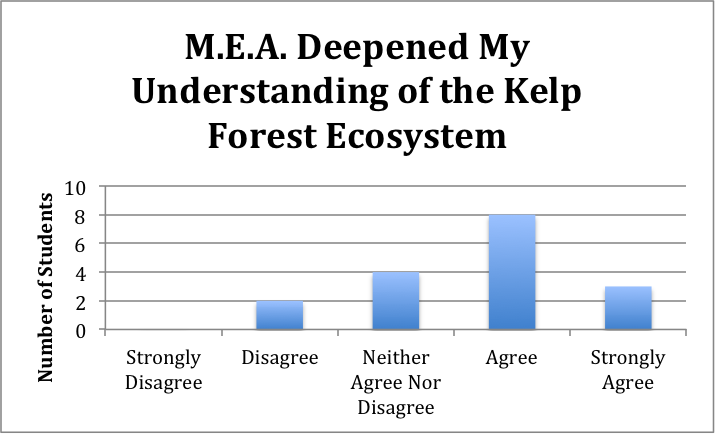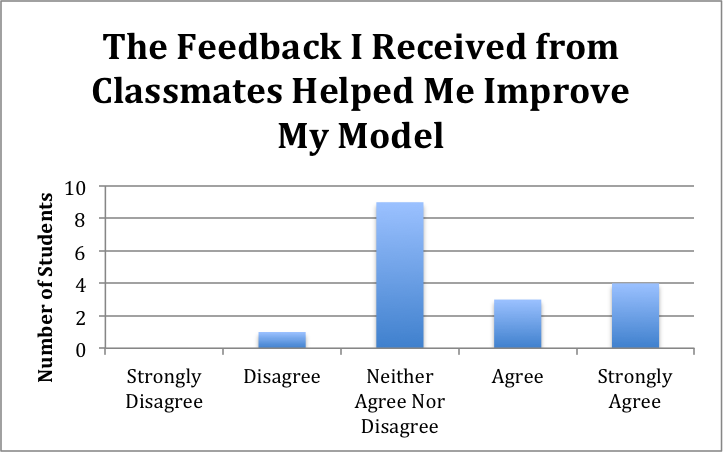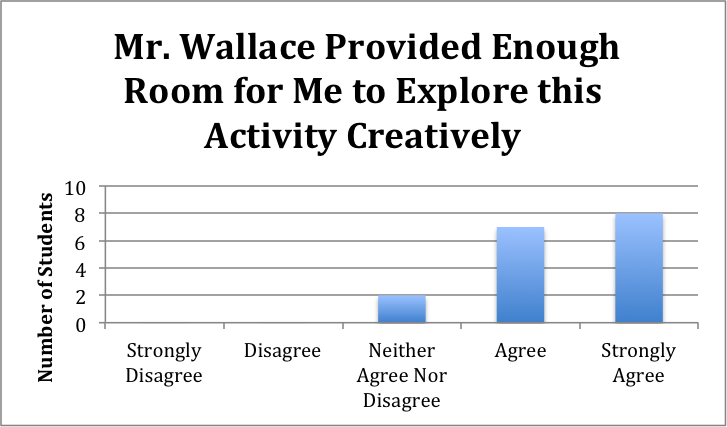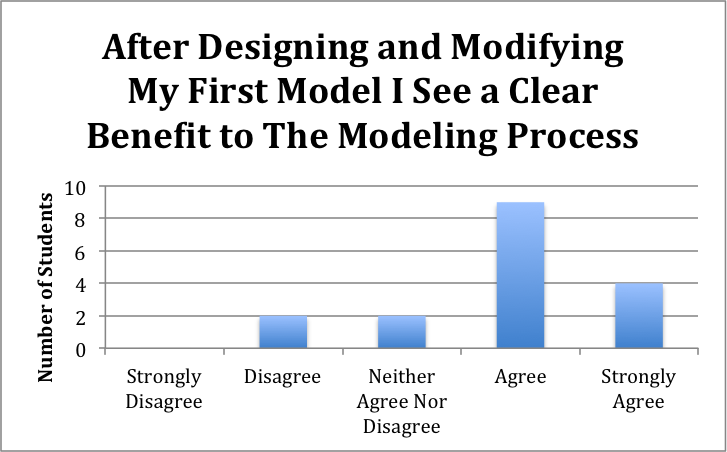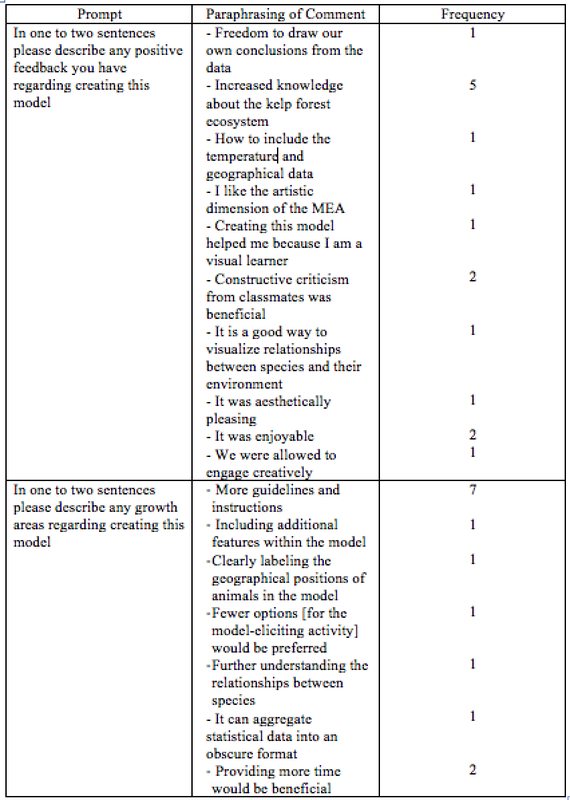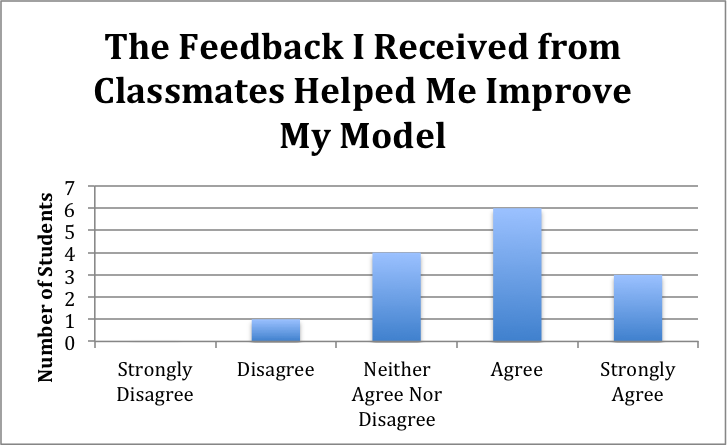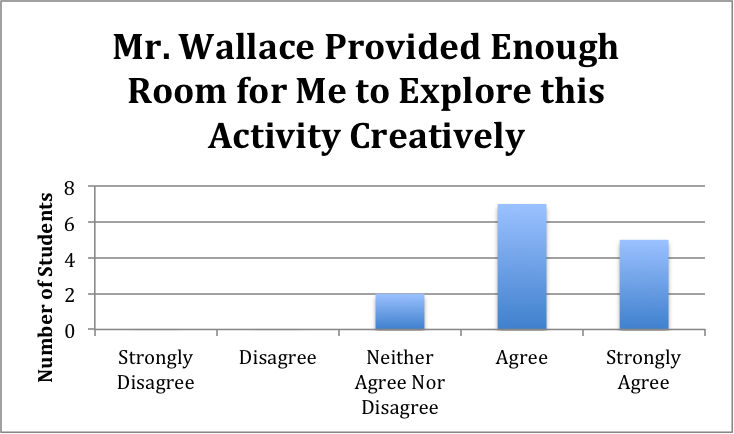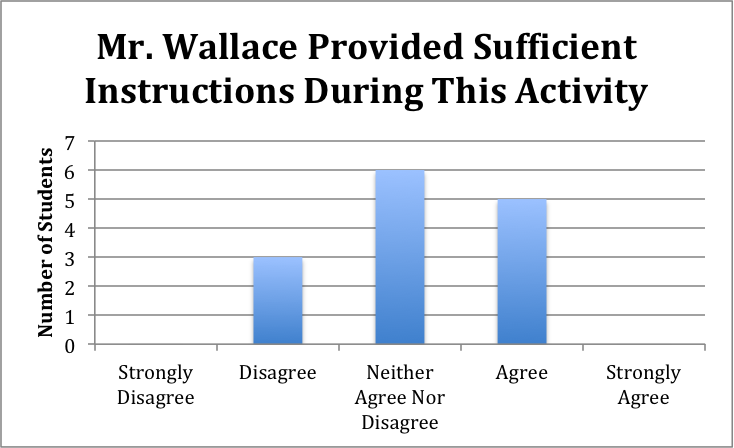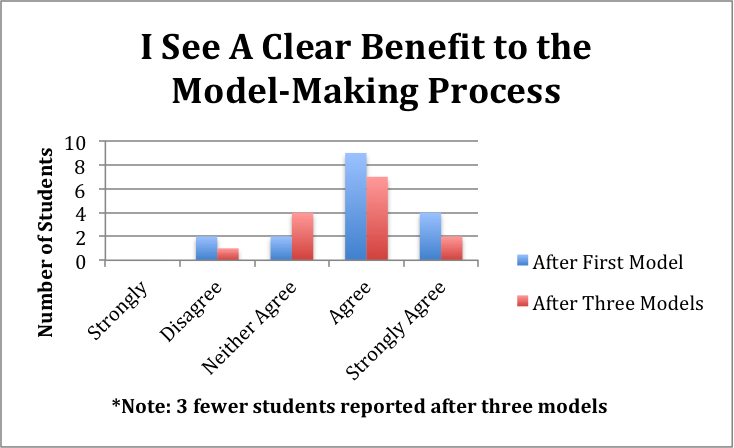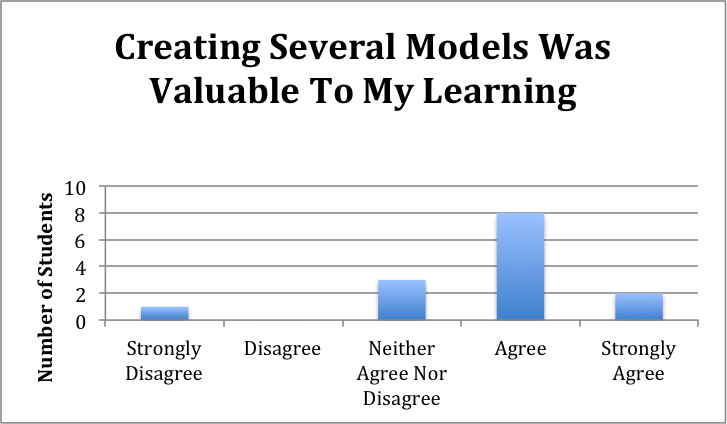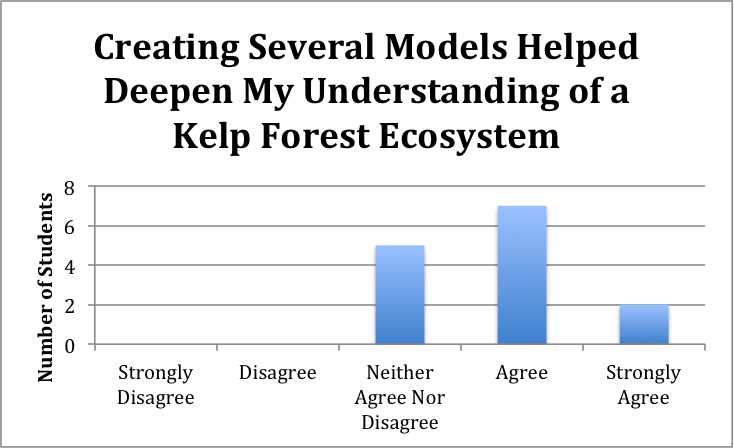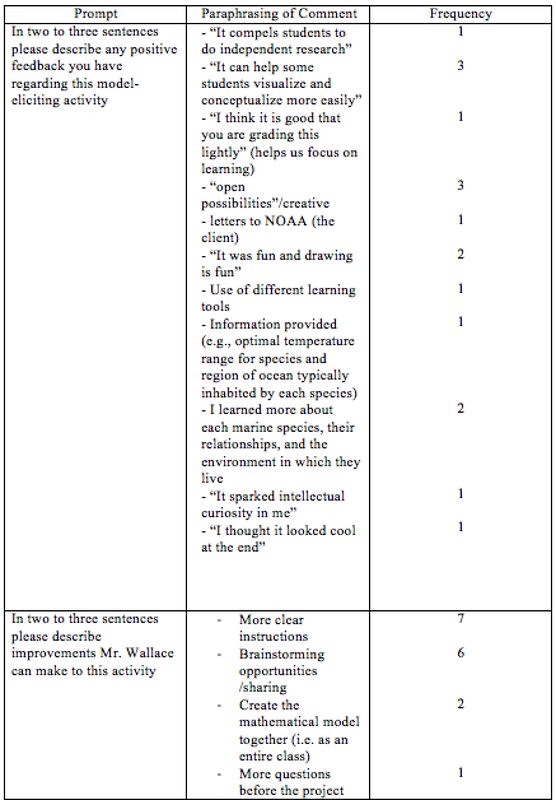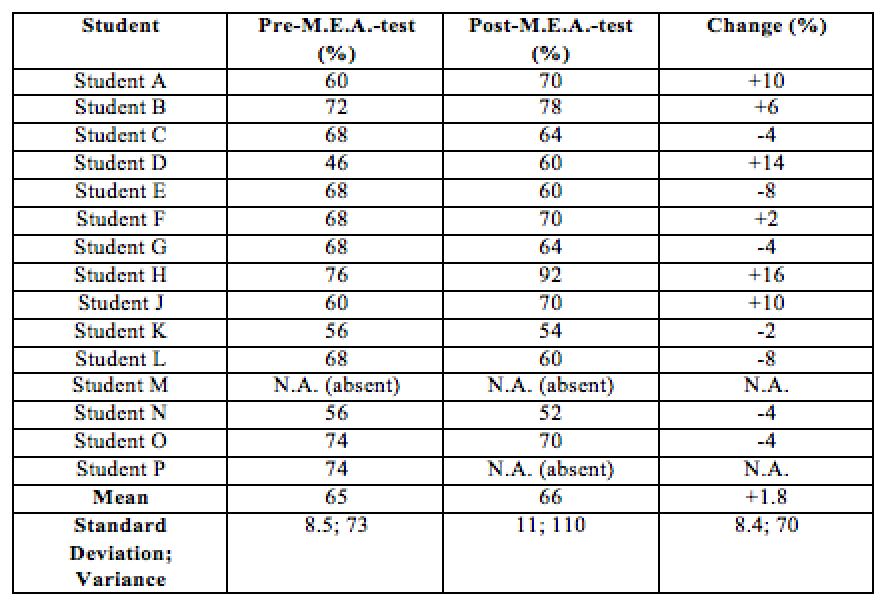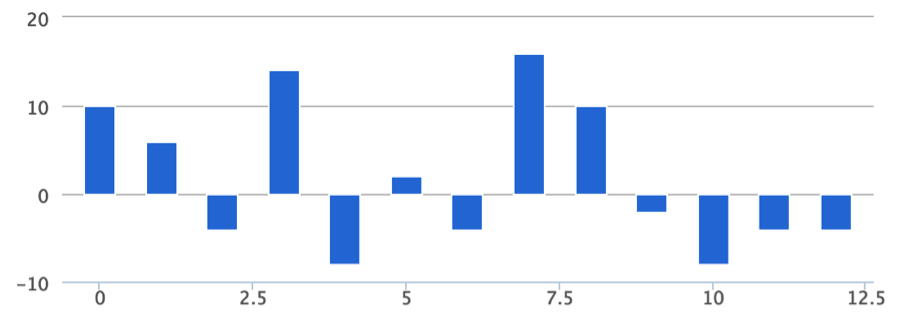APPENDIX A
Questionnaire 1: Closed-Ended Questions (Administered After First Conceptual Model Iteration and Peer Feedback)
Questionnaire 1: Closed-Ended Questions (Administered After First Conceptual Model Iteration and Peer Feedback)
Mean: 3.71
Standard Deviation: 0.92
Variance: 0.85
Standard Deviation: 0.92
Variance: 0.85
Mean: 3.59
Standard Deviation: 0.94
Variance: 0.88
Standard Deviation: 0.94
Variance: 0.88
Mean: 4.35
Standard Deviation: 0.70
Variance: 0.49
Standard Deviation: 0.70
Variance: 0.49
Mean: 3.88
Standard Deviation: 0.93
Variance: 0.86
Standard Deviation: 0.93
Variance: 0.86
Questionnaire 1: Open-Ended Questions (Administered After First Conceptual Model Iteration and Peer Feedback)
Questionnaire 2: Closed-Ended Questions (Administered After First Two Conceptual Model Iterations, Construction of a Mathematical Model, and Peer Feedback)
Mean: 3.79
Standard Deviation: 0.89
Variance: 0.80
Standard Deviation: 0.89
Variance: 0.80
Mean: 4.21
Standard Deviation: 0.70
Variance: 0.49
Standard Deviation: 0.70
Variance: 0.49
Mean: 3.14
Standard Deviation: 0.77
Variance: 0.59
Standard Deviation: 0.77
Variance: 0.59
Mean: 3.71
Standard Deviation: 0.99
Variance: 0.99
Standard Deviation: 0.99
Variance: 0.99
Mean: 3.79
Standard Deviation: 0.70
Variance: 0.49
Standard Deviation: 0.70
Variance: 0.49
Questionnaire 2: Open-Ended Questions (Administered After First Two Conceptual Model Iterations, Construction of a Mathematical Model, and Peer Feedback)
Pre- and Post-M.E.A. Assessment Data (i.e. Test on Giant Kelp Ecosystem)
Change in Percentage Values By Student Between Pre- and Post-M.E.A. Assessment
- Note: two students were excluded from this analysis due to not completing either the pre- or post-assessment
APPENDIX B
Student Inventory Survey
Please note: I will be using this information in an effort to best serve you and your many interests and experiences. If there is any question you would like to ask, please feel free. You are welcome to skip any question or this entire survey. This survey is not part of your grade in any way. I really appreciate anything you are willing to share!
General Information
Name: Date:
Gender Identity: Age:
Racial Identity: (optional) Religious Affiliation (if any):
Place of Birth:
First language:
Second language:
Third language:
Average hours of sleep:
Family
Number of siblings:
Occupation of parent(s)/guardian(s):
Highest levels of education (parent/guardian):
Language(s) spoken at home:
Number of neighbors’ house you visit regularly:
Number of extended relatives (e.g. uncles, grandparents) who live with you:
Other cities you have lived in:
Personal Talents and Growth Areas
What are you most talented at:
List any personal growth areas:
School Life
Favorite subject this year:
Favorite subject in elementary school:
Least favorite subject this year:
What is more important in determining favorite class: subject or teacher?:
Where you see yourself at 35 years old:
Do you like to eat lunch inside or outside:
Where you like to sit in class:
I work very diligently on homework (Always, Often, Sometimes, Rarely, Never):
I care deeply about my grades (Always, Often, Sometimes, Rarely, Never):
I prefer to work in class or at home:
I feel connected with my teachers at school (A, O, S, R, N):
I feel connected with my classmates at school (A, O, S, R, N):
I feel connected with the larger community in which I live (A, O, S, R, N):
Career interests:
I listen to music while completing homework (yes or no):
Social
Favorite hobby(ies):
Sports interest(s):
Musical instruments you play (if any):
Favorite genre(s) of music to listen to:
Average screen time per day:
Favorite meme:
Favorite childhood toy:
Number electronic devices with screens you have with you today:
Number of people with whom you had a meaningful conversation today:
I see myself more as an introvert/extrovert (circle one)
What percent introvert/extrovert do you see yourself as at school:
What percent introvert/extrovert do you see yourself as outside of school:
Other
First thoughts when handed this survey:
Thoughts about your teacher designing and administering this survey:
Student Inventory Survey
Please note: I will be using this information in an effort to best serve you and your many interests and experiences. If there is any question you would like to ask, please feel free. You are welcome to skip any question or this entire survey. This survey is not part of your grade in any way. I really appreciate anything you are willing to share!
General Information
Name: Date:
Gender Identity: Age:
Racial Identity: (optional) Religious Affiliation (if any):
Place of Birth:
First language:
Second language:
Third language:
Average hours of sleep:
Family
Number of siblings:
Occupation of parent(s)/guardian(s):
Highest levels of education (parent/guardian):
Language(s) spoken at home:
Number of neighbors’ house you visit regularly:
Number of extended relatives (e.g. uncles, grandparents) who live with you:
Other cities you have lived in:
Personal Talents and Growth Areas
What are you most talented at:
List any personal growth areas:
School Life
Favorite subject this year:
Favorite subject in elementary school:
Least favorite subject this year:
What is more important in determining favorite class: subject or teacher?:
Where you see yourself at 35 years old:
Do you like to eat lunch inside or outside:
Where you like to sit in class:
I work very diligently on homework (Always, Often, Sometimes, Rarely, Never):
I care deeply about my grades (Always, Often, Sometimes, Rarely, Never):
I prefer to work in class or at home:
I feel connected with my teachers at school (A, O, S, R, N):
I feel connected with my classmates at school (A, O, S, R, N):
I feel connected with the larger community in which I live (A, O, S, R, N):
Career interests:
I listen to music while completing homework (yes or no):
Social
Favorite hobby(ies):
Sports interest(s):
Musical instruments you play (if any):
Favorite genre(s) of music to listen to:
Average screen time per day:
Favorite meme:
Favorite childhood toy:
Number electronic devices with screens you have with you today:
Number of people with whom you had a meaningful conversation today:
I see myself more as an introvert/extrovert (circle one)
What percent introvert/extrovert do you see yourself as at school:
What percent introvert/extrovert do you see yourself as outside of school:
Other
First thoughts when handed this survey:
Thoughts about your teacher designing and administering this survey:
APPENDIX C: APPLICATIONS FOR CONICAL, EXPONENTIAL, AND LOGARITHMIC FUNCTIONS
Applications for Parabolas
2. Pages 1-5 & 98-100
http://spie.org/Documents/Publications/00%20STEP%20Module%2003.pdf
Applications for Ellipses
Application for Circles
Applications for Hyperbolas
Applications for Hyperbolic Paraboloids
Applications for Exponential & Logarithmic Functions
References
Downs, J. (1993). Practical conics sections: The geometric properties of ellipses,
parabolas, and hyperbolas. Mineola, NY: Dover Publications.
- Solar ovens
- Satellite dishes
- Reflecting telescopes
- Radio tellescopes
- Parabolic microphones (i.e. parabolic reflectors)
- Spotlights
- PAR lamps
- LED housings
- Burning glass
- Lenses for cameras, glasses, contact lenses, and eyepieces (for telescopes and microscopes)
- Maximizing profits
- Loudspeakers
- Newtonian telescopes, Gregorian telescopes, and Cassegrain telescopes
- Modeling the flight path of a projectile
- Archimede Death Ray Mirror
- Le Four Solaire at Font-Romeur
- Plants that benefit from pollination
- Lens of the eye
- Image formation with lenses:
2. Pages 1-5 & 98-100
http://spie.org/Documents/Publications/00%20STEP%20Module%2003.pdf
Applications for Ellipses
- Whispering chambers
- Explosive wires design
- Dome structures
- Billiards
- Ultrasonic lithotripsy
- Gregorian Telescopes
- Planetary orbits
- Elliptical machines
- Accoustics
- Fins and airfoils
- Chainwheel of a bicycle
- Search and rescue missions (~maximizing area covered)
- Comets that pass by Earth every so often (e.g. Hailey’s comet)
- Electric Bunsen burners
Application for Circles
- Gears
- Wheels
- Knobs
- Dome structures
- Ferris wheel
- DVDs and CDs
- Ripples from a spherical stone
Applications for Hyperbolas
- Cassegrain telescopes
- Cooling towers of power plants
- Microwave antennas
- Headlights
- Shadow of a shock wave cone and household lamp (with lampshade)
- Gear transmission (the hyperboloidal gears transmit motion to a skew shaft)
- Tesselations
- Radar tracking stations and the intersecting ripples from two stones
- Time Difference of Arrival Analysis (Trilateration)
- Time Difference of Arrival
- Longe-range navigation
- Time Difference of Arrival
- Hyperbolic funnel & Newton’s Laws of Gravity
Applications for Hyperbolic Paraboloids
- Intersections with vertical planes yield parabolas; intersections with horizontal planes produce hyperbolas
- Pringles potato chip
- A Saddle
Applications for Exponential & Logarithmic Functions
- Perception of sound (measured in decibels)
- Perception of brightness (e.g. brightness of stars)
- Decay of human remains
- Radiocarbon dating
- Delineating food chains and food webs
- Measuring the magnitude of earthquakes (The Richter Scale)
- Interest rates and mortgage rates
- Sound and image compression technology
- Quantifying voltage loss in electrical signal transduction
- Hick’s Law (Psychology)
- Fitts’ Law (Psychology)
- Stevens’ Power Law (psychophysics)
- Fractals
- Musical tones and intervals
- Entropy and Chaos Theory
References
Downs, J. (1993). Practical conics sections: The geometric properties of ellipses,
parabolas, and hyperbolas. Mineola, NY: Dover Publications.
